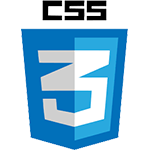
Happy Clients
Projects Completed
Running Projects
What is Dynamic Website?
A dynamic website is a type of website that displays content that can change and adapt based on various factors, such as user interactions, database queries, and real-time data. Unlike static websites, dynamic websites use server-side technologies to generate and deliver content on-the-fly, allowing for a more personalized and interactive user experience.
Unlike static pages, dynamic websites can change automatically according to factors like users’ locations, time zones, and past activities. To change the website content, dynamic sites use server-side scripting languages like PHP on top of HTML, CSS, and JavaScript. This lets them connect to a database to fetch information that will be added to the website.
Dynamic sites may only use a client-side scripting language, like JavaScript. It lets the website content change based on user inputs on the website.
A dynamic website shows different content to different users. The content may depend on their locations, time zones, language preferences, or past behavior on the website.Dynamic sites use a server-side programming language to connect with a database to enable interactive features and alter the content. Their common use cases include forums, social media platforms, and eCommerce sites.












